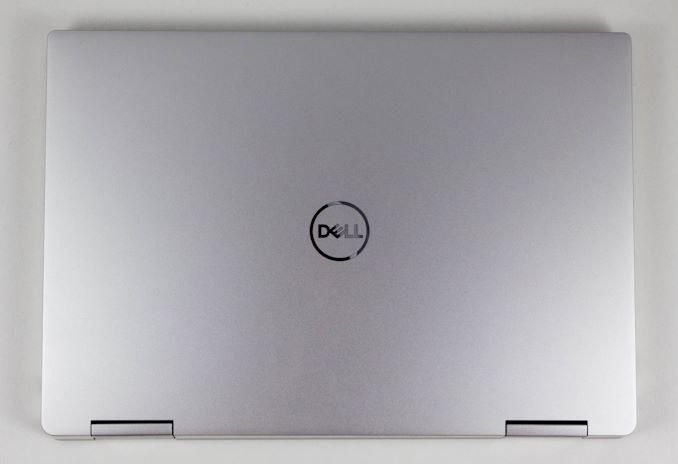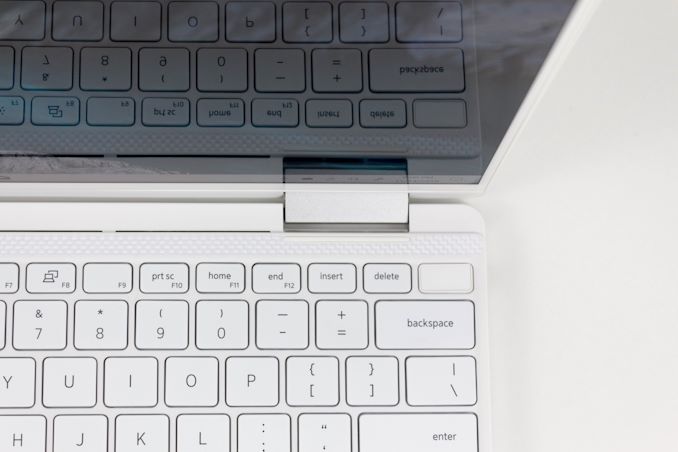The Dell XPS 13 7390 2-in-1 Review: The Ice Lake Cometh
by Brett Howse on November 15, 2019 11:30 AM ESTFinal Thoughts
Dell’s XPS 13 has been one of the most defining laptops in recent memory, having changed the landscape for everyone after introducing the InfinityEdge display at CES in January 2015. Since then, the company has continued to refine their XPS lineup as they were challenged on all sides by other PC makers. The XPS 13 9370 2-in-1 is the latest in the lineup, offering a thinner and lighter design, a larger and taller display, and the latest Intel laptop CPU platform. The XPS line has been at the forefront before, and Dell wants to ensure it stays there.
Dell has done a lot right with this device. Starting with the display, the move back to the 16:10 is a net-win for consumers. The extra vertical pixels make for a more productive device. The 16:9 era wasn’t the best for PCs, and it’s great to see Dell move back to a proper 1920x1200 widescreen laptop. In addition, it’s one of the most accurate we’ve tested, and offers a fantastic anti-reflective coating that makes it a joy to use in almost any lighting condition. If you are less concerned about battery life, Dell also offers a 3840x2400 panel with 90% P3-D65 gamut coverage, and HDR 400 certification. Both displays offer Dolby Vision processing as well.
The XPS 13 2-in-1 offers the extra functionality of a convertible laptop with very few of the drawbacks. Compared to the standard XPS 13, the 2-in-1 is only a fraction heavier, and the variable torque hinge keeps the laptop feel when opening the lid, while still providing a strong hinge for touch. The ability to quickly swap between laptop and stand mode makes the 2-in-1 a great device for media consumption, especially when traveling.
Intel’s Ice Lake platform also brings some nice upgrades. Although peak CPU frequency is down compared to the Comet Lake 14 nm processors in the same 15-Watt range, the new Sunny Cove architecture provides some serious improvements to IPC, especially when coupled with LPDDR4X memory, which has been such a hindrance on the 14 nm Intel processors. Laptops can now be offered with 32 GB of RAM without having to utilize power-hungry DDR4. Ice Lake also brings some major improvements to wake from sleep, and finally brings the laptop into the same range as tablets and smartphones when waking them.
In addition, the graphics prowess of the new Intel Iris graphics finally brings the much-needed performance gains to Intel’s integrated GPU. Initial testing seems to show that this new GPU is close to AMD’s Vega in terms of overall performance, and while not yet surpassing AMD, it is a huge step forward, especially on the 64 EU G7 model we tested.
Battery life is also a major win for Dell. The XPS 13 has long been one of the most efficient devices around, and the new Ice Lake processor only adds to that capability. Despite Dell offering a smaller battery than they have in the past in the XPS 13, it still provides exceptional battery life.
Accordingly, any criticism we have for the laptop is limited. The MagLev keyboard offers very little travel, and is not as reassuring to type on as laptops like the Microsoft Surface range, or even Dell’s Latitudes. But Dell wanted the XPS 13 to be thin, so this keyboard is their answer. Some people prefer shallow throw keyboards, and over time you’d likely adapt, but it is quite a bit different than what most people would be used to.
The Arctic White color, while stunning to look at, causes the keyboard to be washed out in almost any lighting if the keyboard backlighting is used, which is a shame. Perhaps if Dell switched to a different color for the LEDs it would compensate. The glass-fiber weave does have a great texture though.
But other than those somewhat minor issues, the new XPS 13 7390 2-in-1 is simply fantastic. The design is wonderful, with great touches like the battery status indicator being visible even if the laptop is closed. The integrated fingerprint reader in the power button is a nice way to get Windows Hello support. Dell’s new camera system allows them to keep the incredibly tiny bezels but also locate the camera in the correct location. There’s even two 4-lane Thunderbolt 3 ports for expansion.
The XPS 13 2-in-1 starts at $999.99, which is very competitive, and although that model does ship with just 4 GB of non-expandable RAM, it does at least offer 256 GB of storage. Realistically customers should opt for the i5-1035G1 / 8 GB / 256 GB model which does jump the price up to $1299.99. As configured for the review unit, which is the i7-1065G7 / 16 GB / 512 GB, the price is $1699.99; but the added RAM, storage, and the top-end processor with the G7 GPU does add a lot of performance as well.
Dell hasn’t quite revolutionized the industry this time around, but Dell’s XPS 13 evolution has produced one of the best laptops on the market. It is most certainly one to be checked out.














108 Comments
View All Comments
abufrejoval - Friday, November 15, 2019 - link
First impression: This sure doesn't disappoint!1900x1200 makes a ton of sense (4k at 13" much less to my eyes), real CPU performance is better than Whiskey without draining the bottle, GPU performance is where I expected from a Skylake Iris 550 notebook I own, physical design sounds great... Perhaps I'd wait for a Lenovo variant, because I do type a lot.
With the higher-resolution, touch screen and a pen I'm not sure I'd ever be able to get it back from my daughter who can paint for hours even on a 6" mobile phone.
The most welcome surprise seemed the price: $1500 for 16GB and an i7 seems downright reasonable for what is most likely the current high-end.
Alas, when I went into the local (EU) configurator and added 32GB RAM, that added €1000 for what is essentially a €50 item (16 GB SO-DIMM). Sure it also added a 1TB NVME (€100 total or another €50 for the delta) and a 4k display I don't care about, but at that point I can't but call it the usual rip-off: I like my 4k at 42" and storage to be replacable.
So I'll hold back and onto my Lenovo S730 (16GB RAM, 1TB Samsung, AX200) for €1200 in May a little longer. That one also has an additional USB-C port in addition to the two Thunderbolts and that turns out to be really useful day-to-day, especially if your (mini) TB dock doesn't supply power, too.
But I note with satisfaction that at least in the mobile space Intel is still able to execute and I wish them well, while I won't remotely consider any Intel while there is Rome in the datacentre.
MASSAMKULABOX - Wednesday, November 20, 2019 - link
I think these are priced for the Business Market .. and its "car" pricing .. the base model is surprisingly cheap, but when you addd satnav,better wheels, heated sunroof, upgraded stereo , you've added 50% to the price. But 1000 bux for RAM is a trick learned from Apple.And where does this leave NVidia going forwrd? All their BAse(models) belong to us.
IntelUser2000 - Friday, November 15, 2019 - link
I'm suspicious of Anandtech's battery life tests for laptops.This is the only review where it doesn't regress and does significantly better than the Whiskey Lake generation.
Icelake does really well on idle but on actual usage like web browsing it plummets. Perhaps its time for them to update their tests.
yeeeeman - Saturday, November 16, 2019 - link
Phoronix review of the same laptops gets to the conclusion that ice lake is more power efficient than 14nm parts in both idle and heavy use.timecop1818 - Saturday, November 16, 2019 - link
Soldered in Killer Wireless garbage again. Not buying another Dell ever until they switch that shit out. I don't care if its made by Intel these days as long as they keep promoting that retarded branding shit in their non-gamer laptops, they will not have my money.Reflex - Saturday, November 16, 2019 - link
Literally just install the Intel AX200 drivers. Took me 5 mins and works great.timecop1818 - Saturday, November 16, 2019 - link
PCI IDs are different, no?Reflex - Sunday, November 17, 2019 - link
Doesn't seem to be. It will tell you its the incorrect driver but once you force it it will install, and future driver updates via Intel's updater will pick them up and install without a question.timecop1818 - Sunday, November 17, 2019 - link
Yeah, that means it's a different PCI ID. Because if they were included in the intel driver inf that would install without forcing. Intel would prolly be PCI\VEN_8086*DEV_xxxx and killer stuff probably uses their own vendor ID. Anyway, I'm happy with my current gemcut spectre x360 which has better screen and keyboard than XPS 13 anyway.Reflex - Sunday, November 17, 2019 - link
I hear its a good laptop, it was on my list until I noticed it didn't have a 32GB of RAM option. They both appeal to slightly different requirements IMO and I'd recommend either depending on the user and what they need.